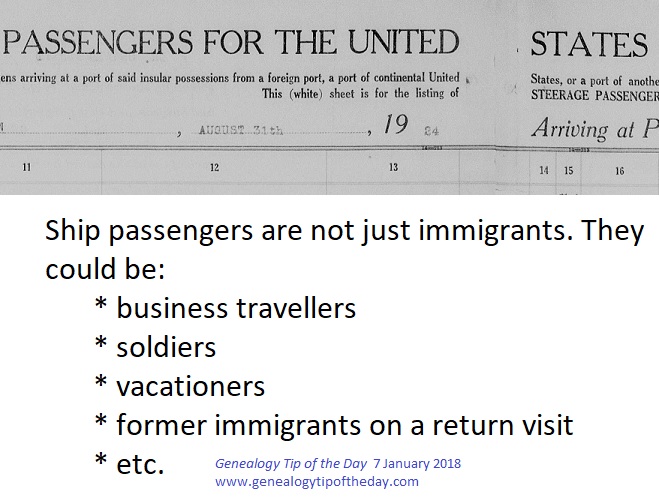 Immigrants looking to settle in the United States were not the only ones to cross the ocean on a ship and appear on a manifest. Depending upon the time period, passengers could also be:
Immigrants looking to settle in the United States were not the only ones to cross the ocean on a ship and appear on a manifest. Depending upon the time period, passengers could also be:
- merchants and other businessmen
- soldiers returning to the United States
- native citizens returning from a trip abroad
- immigrants returning to the US from a return trip to their homeland
I even found a manifest entry for a cousin who was a Red Cross nurse in Europe during World War I. If a passenger list entry is recent enough (generally late 19th century or later), it may give significant details about the passenger.








3 Responses
Good point & place to check into.
My grandfather (born in 1881) recalled nine trans-atlantic trips before he was 25 according to my dad. I could find a record of three.
Family lore is that his father worked aboard a freighter, and the family often went along. I can’t find freighter manifests… from Sao Paulo, Brazil to Philadelphia to Hamburg and back. My grandmother was from Sao Paulo… I would enjoy knowing how they met…
Deployments were often accompinied with a postcard from the branch of service to dedignated relative informing that their soldier arrived To the country they were to engage in battle. Families kept these postcards as any future updates to their where abouts would be from personal letters home. Military mail is unique in that where ever stationed, it is considered US soil and so the US postal service delivered and picked up federally protected parces and letters.
Many military persons traveled back home after WWII. Checking the year 1945, many in the service returned to their official base in order to report for duty to complete medical checks, paperwork, etc… So it would be a few more days until they were officially released from service to return to loved ones.